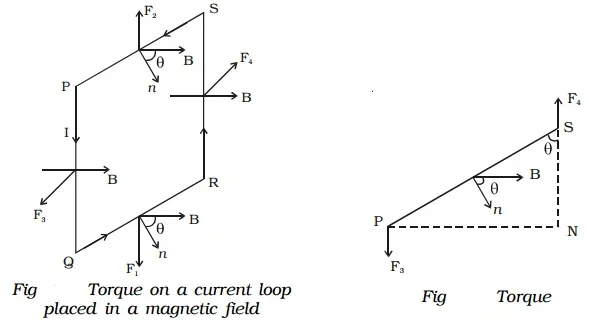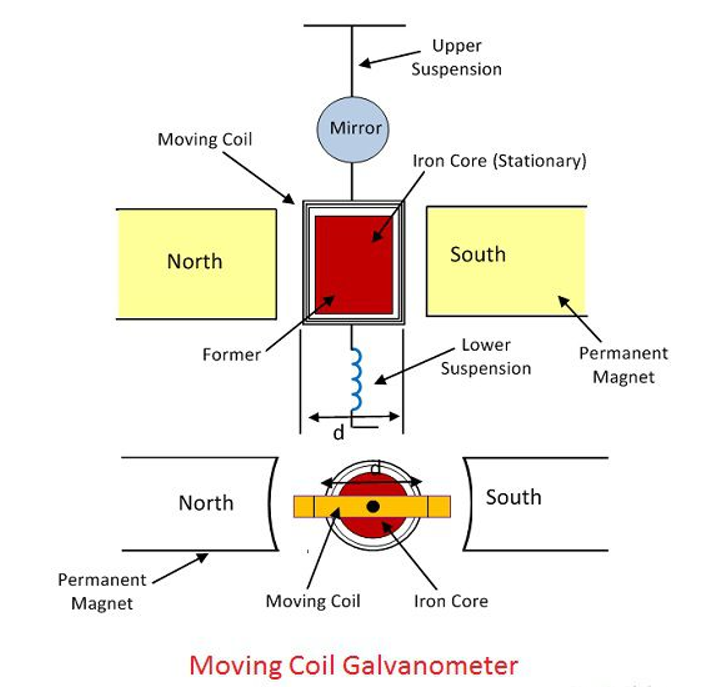Torque Experienced by a Current Loop in Uniform Magnetic Field; Moving Coil Galvanometer-its Current Sensitivity and Conversion to Ammeter and Voltmeter
Torque is the twisting force that causes the rotation. The axis of rotation is a specific point where there is a rotation of the object.
τ = F×r
Here F is used to denote the applied force, r shows the distance between the center of the axis of rotation and to the point at which force is applied.
Torque on the Current Loop and Magnetic Dipole
The magnetic dipole is limit of the closed-loop of current or the pair of poles as dimensions of the sources are reduced to zero, while the magnetic moment remains constant. If steady electric current is passing through the rectangular loop, that is placed in the uniform magnetic field, then it experiences torque, but not the net force. The behavior is just like similar to that of the electric dipole in a uniform electric field. Let consider a rectangular loop as shown in the below figure. It is placed in the uniform magnetic field having the induction B. θ is the angle between the direction of the magnetic field and normal to the plane of the loop.

When the coil is parallel to the magnetic field the torque is maximum and when the coil is perpendicular to the magnetic field then the torque is zero.
Moving Coil Galvanometer
The moving coil galvanometer is an electromagnetic device that is used for the measurement of smaller current values. It has a coil, permanent horseshoe magnet, pivoted spring, soft iron core, scale, pointer, and metallic frame. Its working principle is that when the torque acts on the current-carrying coil that is suspended in a uniform magnetic field then it causes the rotation of the coil. So, deflection in a coil of the moving coil galvanometer is directly proportional to the current that is flowing in the coil.

The sensitivity of Moving Coil Galvanometer
Its sensitivity is defined as the ratio of change in the deflection of the galvanometer to change in the current. Therefore, sensitivity can be written as follows.
= dθ/di
If the galvanometer causes the larger deflection for the smaller current then it is said to be sensitive. The sensitivity can be increased by increasing the area of coil and number of turns, by causing an increase in magnetic induction and by decreasing couple per unit twisting of suspension fiber.
Conversion to Ammeter and Voltmeter
The galvanometer can be converted to a voltmeter by connecting a shunt resistance to it in the parallel direction. The resistance of shunt resistance should be very low. The moving coil galvanometer can also be converted to the ammeter by connecting the resistance box in a series of combinations.